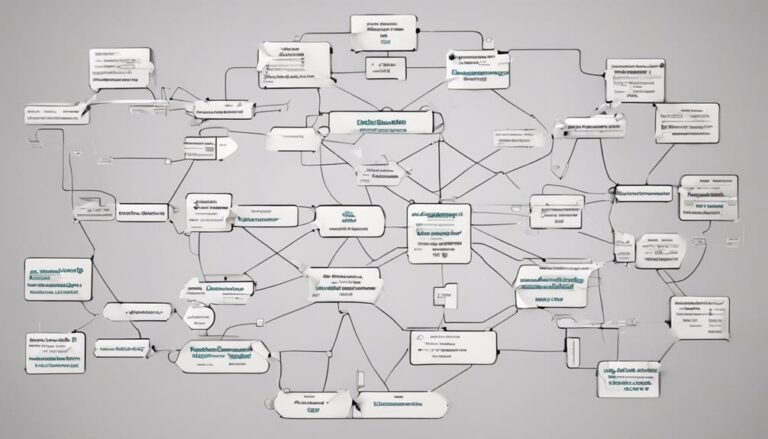Employment Insurance (Ei): What It Means, How It Works
Employment Insurance (EI) provides temporary financial assistance to those who lost their job through no fault of their own, encouraging workforce participation. Eligibility requires a minimum number of insurable hours worked. Benefits cover 55% of average weekly earnings and are calculated based on work history and regional unemployment rates. EI supports re-employment, stability, and consumer spending during periods of job loss. Special considerations cater to seasonal workers and specific industries, ensuring tailored support across various regions. EI goes beyond financial aid, providing benefits for sickness, parental care, and compassionate care, showcasing its all-encompassing assistance approach.
Key Takeaways
- EI offers temporary financial assistance to eligible individuals.
- Qualification based on minimum insurable hours worked and job loss through no fault.
- Benefits cover 55% of average weekly earnings.
- Program provides support beyond financial assistance, including sickness and parental care benefits.
- Tailored assistance for seasonal workers and those in regions with high unemployment rates.
EI Program Overview
What fundamental aspects define the Employment Insurance (EI) program in Canada and how do they shape its functionality and impact on individuals within the workforce?
The EI program details encompass providing temporary financial assistance to those who have lost their jobs, are unable to work due to specific circumstances, or are moving to new employment. Eligibility criteria for EI benefits include having worked a minimum number of insurable hours in the past year and having lost the job through no fault of one's own. These criteria guarantee that individuals who contribute to the program during their employment can access financial support when needed, maintaining a balance between assistance and encouraging workforce participation.
The program's structure aligns with the goal of supporting individuals during periods of job loss or economic uncertainty.
Qualifying for EI Benefits
The eligibility criteria for Employment Insurance (EI) benefits in Canada require individuals to have worked a minimum number of insurable hours in the past year and to have lost their job through no fault of their own. This ensures that those who contribute to the program can access financial support when faced with job loss or specific circumstances.
Meeting the eligibility requirements involves submitting an application detailing the reasons for job separation, work history, and personal information. Once approved, individuals can access job search support and training opportunities to enhance their skills and find new employment.
This assistance aligns with EI's aim to not only provide financial aid but also facilitate re-employment and long-term stability for those in need.
Understanding Benefit Calculation
Analyzing the intricate formula for calculating Employment Insurance benefits reveals a structured approach based on individual work history and earnings. Benefit eligibility is determined by the number of hours worked and the regional unemployment rate. Payment structure is linked to the average insurable earnings, with benefits covering 55% of the average weekly earnings. This calculation method guarantees that individuals receive support that aligns with their previous income levels, providing a safety net during periods of unemployment. The impact of this calculation method on the economy and job market is significant, as it helps stabilize individuals financially, reducing the overall strain on social welfare systems and supporting consumer spending.
| Benefit Calculation Components | Description |
|---|---|
| Hours of Work Required | Varies based on region |
| Average Weekly Insurable Earnings | 55% of total earnings |
| Benefit Duration | Linked to regional rates |
Special EI Considerations
Employment Insurance (EI) program in Canada encompasses unique considerations that play a pivotal role in supporting diverse segments of the workforce. Special EI considerations include:
- Seasonal workers: EI plays an important role in supporting individuals engaged in seasonal work, especially in regions like the Atlantic provinces where seasonal employment is common.
- Fisherfolk benefits: Special rules are in place to facilitate EI collection for fisherfolk, recognizing the unique nature of their work and income patterns.
- Geographic distribution: Over half of EI benefits are paid in Ontario and Western provinces, while Atlantic provinces with more unemployed individuals rely heavily on EI.
- Regional dependence: The reliance on EI benefits due to seasonal work in certain regions highlights the importance of tailored support mechanisms within the EI program.
Key Takeaways on EI
Examining the diverse array of benefits provided by Canada's Employment Insurance (EI) program reveals its vital role in supporting individuals facing various life circumstances. EI offers extensive benefits coverage, including birthing, parental care, and compassionate care benefits. These benefits extend beyond financial assistance, catering to diverse needs such as housing, training, and education.
The weekly benefit rate is calculated at 55% of average weekly insurable earnings, ensuring a significant level of financial support. EI sickness assistance further enhances the program by providing benefits for sickness, injury, or quarantine, enabling recipients to focus on recovery without financial worries. Additionally, compassionate care benefits offer essential support to individuals looking after gravely ill family members, showcasing the program's commitment to providing holistic assistance to those in need.
Conclusion
To summarize, Employment Insurance (EI) serves as an essential safety net for individuals facing unemployment or unable to work due to various circumstances. Through a system intricately linked to past earnings and work history, EI offers tailored benefits to alleviate financial burdens.
The program's evolution in 1996 introduced a framework that considers regional economic dynamics, ensuring benefit durations and eligibility criteria are reflective of prevailing unemployment rates. EI stands as a lifeline for many, providing essential support in times of need.







